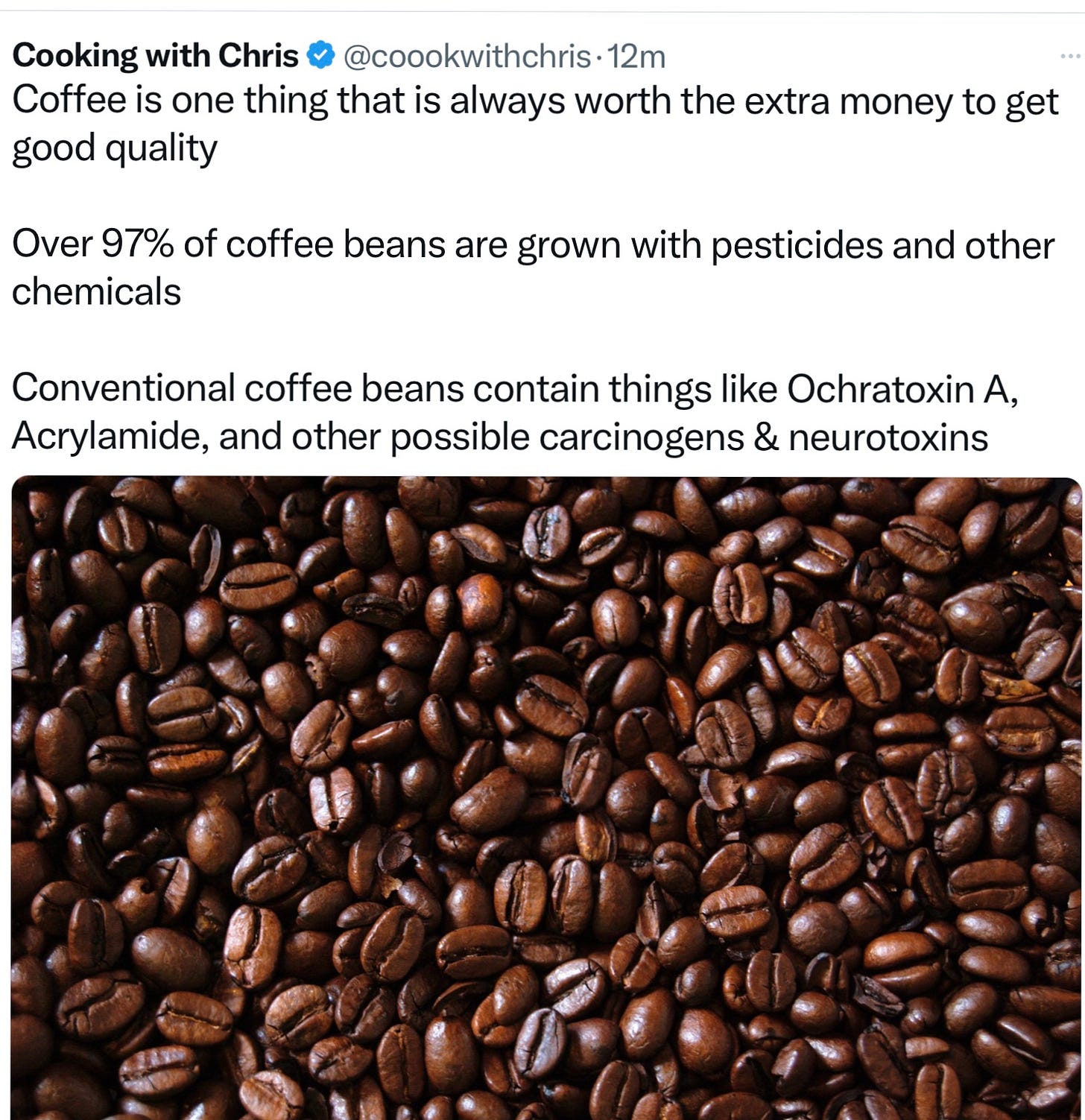Rule #4: Some, but not all, things Should be Organic
My wife always insisted on organic food for our kids. I was always skeptical. But not surprisingly she was right that you are better off erring on the side of organic food. Indeed, “a 2015 study funded by the EPA found that consumers who often or always bought organic had significantly less insecticides in their urine, even though they ate 70 percent more produce than people who bought only conventionally grown fruits and vegetables.”
Let’s start at the beginning. Most doctors agree by now that pesticides are a problem. One study suggests that global pesticides grew 20 percent over the last decade.1 Over 1 billion pounds of pesticides are used each year in the United States alone.2
“Pesticides have been associated with short- and long-term effects on human health, including elevated cancer risks and potential disruption of the body’s metabolic functioning as well as the reproductive, immune, and nervous systems.”3 Two pesticides that are frequently found in fruits and vegetables harm the male reproductive system.4 Researchers have even tied pesticides to increases in body mass index in children.5
Fruits, vegetables, coffee, and even water are responsible for most of the pesticides we consume (see Rule #2 for tips on getting them out of your water).
So what can you do? Eat organic!
There is no doubt that organic is more expensive. But not everything has to be organic. And if you are buying all organic right now, this post might even save you money!
Every year, the Environmental Working Group (an independent non-profit organization) studies the results of USDA and FDA testing. The USDA “peels or scrubs and washes” produce before it is tested, whereas the FDA only removes the dirt. The testing in 2024 revealed over 254 pesticides on fruits and vegetables.6 (The article I reviewed did not indicate if EWG broke out the USDA from the FDA and parsed the results individually.).
Based on these reviews, EWG publishes a list of the dirtiest 12 fruits and vegetables and the cleanest 15. On the dirtiest 12, there was a 95 percent chance that pesticides would be found. With the clean 15, almost 65 percent “had no detectable pesticide residues.”7
So, if you can, buy the dirty dozen organic. Here are the dirty dozen:
Strawberries
Spinach
Kale, Collard, and Mustard Greens
Grapes
Peaches
Pears
Nectarines
Apples
Bell and hot peppers
Cherries
Blueberries
Green Beans
The clean 15 are: sweet corn, avocados, pineapple, onions, papaya, sweet peas, asparagus, honeydew melon, kiwi, cabbage, watermelon, mushrooms, mango, sweet potatoes and carrots.
EWG studied 46 fruits and vegetables total. If you want to know the 19 that didn’t make it into either category, you can find them here.
For what it’s worth, they don’t change much from year to year. Here is a post from Dr. Mark Hyman from 2023 that shows as much.
Coffee
As for your morning coffee, you might want to exercise care there as well since most of us consume it daily. “Coffee is part of the Rubiaceae family, which is a type of flowering plant with seeds producing coffee.”8 Farmers often spray the plant—like fruits and vegetables—with pesticides to protect them from bugs and disease. But unlike other fruits and vegetables, coffee is roasted. Even after roasting, pesticides have been found on coffee beans.9
Luckily, organic coffee does not have to be overly expensive. While the best brands are expensive, we have found Organic Coffee at Trader Joe’s for $7.99. I can’t promise it is the best coffee you have ever had, but my wife and I like it.
Tips:
Try to make sure you buy organic when you are getting the dirty dozen. Worry less when getting the clean 15–we don’t worry about organic if they are on this list.
When you buy coffee for the home, try to find an organic brand that is reasonable and tastes good.
And remember, if you make your body strong at home, don’t worry when you go out or are on the road!
Shattuck A, Werner M, Mempel F, et al. Global pesticide use and trade database (GloPUT): new estimates show pesticide use trends in low-income countries substantially underestimated. Glob Environ Change. 2023;81:102693. doi:1016/j.gloenvcha.2023.102693
Alavanja MC. Introduction: pesticides use and exposure extensive worldwide. Rev Environ Health. 2009 Oct-Dec;24(4):303-9. doi: 10.1515/reveh.2009.24.4.303. PMID: 20384038; PMCID: PMC2946087; https://www.usgs.gov/centers/ohio-kentucky-indiana-water-science-center/science/pesticides#:~:text=Pesticides%20Active&text=About%201%20billion%20pounds%20of,%2C%20insects%2C%20and%20other%20pests.
https://www.ifm.org/articles/pesticides-and-human-health-effects?utm_source=chatgpt.com
https://www.ewg.org/foodnews/summary.php
https://drhyman.com/blogs/content/pesticides-herbicides-fertilizers-oh-my
https://www.ewg.org/foodnews/summary.php
https://www.ewg.org/foodnews/summary.php
Merhi A, Kordahi R and Hassan HF (2022) A review on the pesticides in coffee: Usage, health effects, detection, and mitigation. Public Health 10:1004570. doi: 10.3389/fpubh.2022.1004570
Merhi A, Kordahi R and Hassan HF (2022) A review on the pesticides in coffee: Usage, health effects, detection, and mitigation. Public Health 10:1004570. doi: 10.3389/fpubh.2022.1004570




